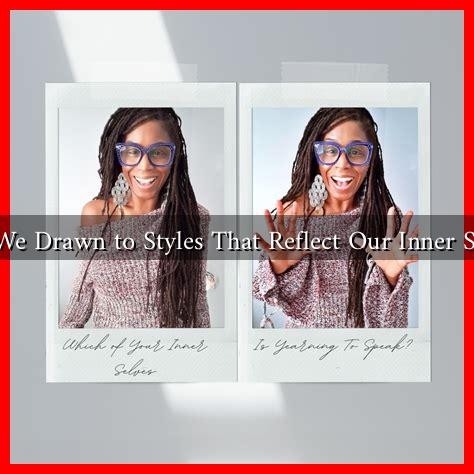-
Table of Contents
Are We Drawn to Styles That Reflect Our Inner Selves?
In a world where personal expression is increasingly valued, the styles we choose—be it in fashion, home decor, or even art—often serve as a mirror reflecting our inner selves. This phenomenon raises an intriguing question: Are we inherently drawn to styles that resonate with our true identities? This article delves into the psychological, cultural, and social factors that influence our aesthetic preferences, supported by research and real-world examples.
The Psychology of Aesthetic Preference
Psychologists have long studied the relationship between personality and aesthetic preferences. According to a study published in the journal *Personality and Individual Differences*, individuals often select styles that align with their personality traits. For instance:
- Openness to Experience: People high in this trait tend to prefer eclectic and unconventional styles, often gravitating towards bold colors and unique patterns.
- Conscientiousness: Those who score high in conscientiousness may favor minimalist and organized designs, reflecting their preference for order and structure.
- Extraversion: Extraverts often choose vibrant and expressive styles, which mirror their outgoing and social nature.
This connection between personality and style suggests that our choices are not merely superficial but are deeply rooted in our psychological makeup. For example, a person who identifies as creative may be drawn to artistic clothing or abstract art, while someone who values tradition might prefer classic styles.
Cultural Influences on Style Choices
Cultural background plays a significant role in shaping our aesthetic preferences. Different cultures have distinct styles that reflect their values, history, and social norms. For instance:
- Eastern vs. Western Aesthetics: Eastern cultures often emphasize harmony and balance, leading to preferences for subtle colors and natural materials. In contrast, Western cultures may celebrate individualism and boldness, resulting in more diverse and vibrant styles.
- Fashion Trends: Globalization has led to the blending of styles, but cultural roots still influence choices. For example, the rise of streetwear reflects urban culture and youth identity, appealing to those who resonate with its rebellious spirit.
Moreover, cultural events and movements can significantly impact style preferences. The rise of sustainability has led many to adopt eco-friendly fashion, reflecting a growing awareness of environmental issues and personal values.
Social Identity and Group Dynamics
Our social circles and communities also shape our style choices. The concept of social identity theory posits that individuals derive part of their self-concept from their group memberships. This can manifest in various ways:
- Peer Influence: People often adopt styles that are popular within their social groups, whether it’s a specific fashion trend or a particular way of decorating their homes.
- Subcultures: Subcultures, such as goth, punk, or hip-hop, have distinct styles that reflect the values and beliefs of their members. Individuals drawn to these subcultures often find a sense of belonging through their aesthetic choices.
For example, a study by the *Journal of Consumer Research* found that individuals who identify strongly with a particular group are more likely to adopt the group’s style, reinforcing their social identity.
Case Studies and Real-World Examples
Several case studies illustrate the connection between style and inner self. One notable example is the rise of the “quiet luxury” trend, where individuals opt for understated elegance over ostentatious displays of wealth. This shift reflects a broader societal move towards authenticity and mindfulness, resonating with those who value substance over superficiality.
Another example is the popularity of DIY home decor, which allows individuals to express their creativity and personal values. Platforms like Pinterest and Instagram have enabled people to showcase their unique styles, further emphasizing the connection between personal identity and aesthetic choices.
Conclusion: The Reflection of Inner Selves
In conclusion, our attraction to specific styles is a complex interplay of psychological, cultural, and social factors. From personality traits to cultural influences and social identities, the styles we choose often serve as a reflection of our inner selves. Understanding this connection can empower individuals to make more conscious choices in their personal expression, leading to a more authentic and fulfilling life.
As we navigate a world rich in aesthetic diversity, it’s essential to recognize that our style choices are not just about appearance; they are a profound expression of who we are. Embracing this understanding can lead to a deeper appreciation of the styles we are drawn to and the stories they tell about our identities.
For further reading on the psychology of aesthetics, consider exploring resources from the American Psychological Association at www.apa.org.

